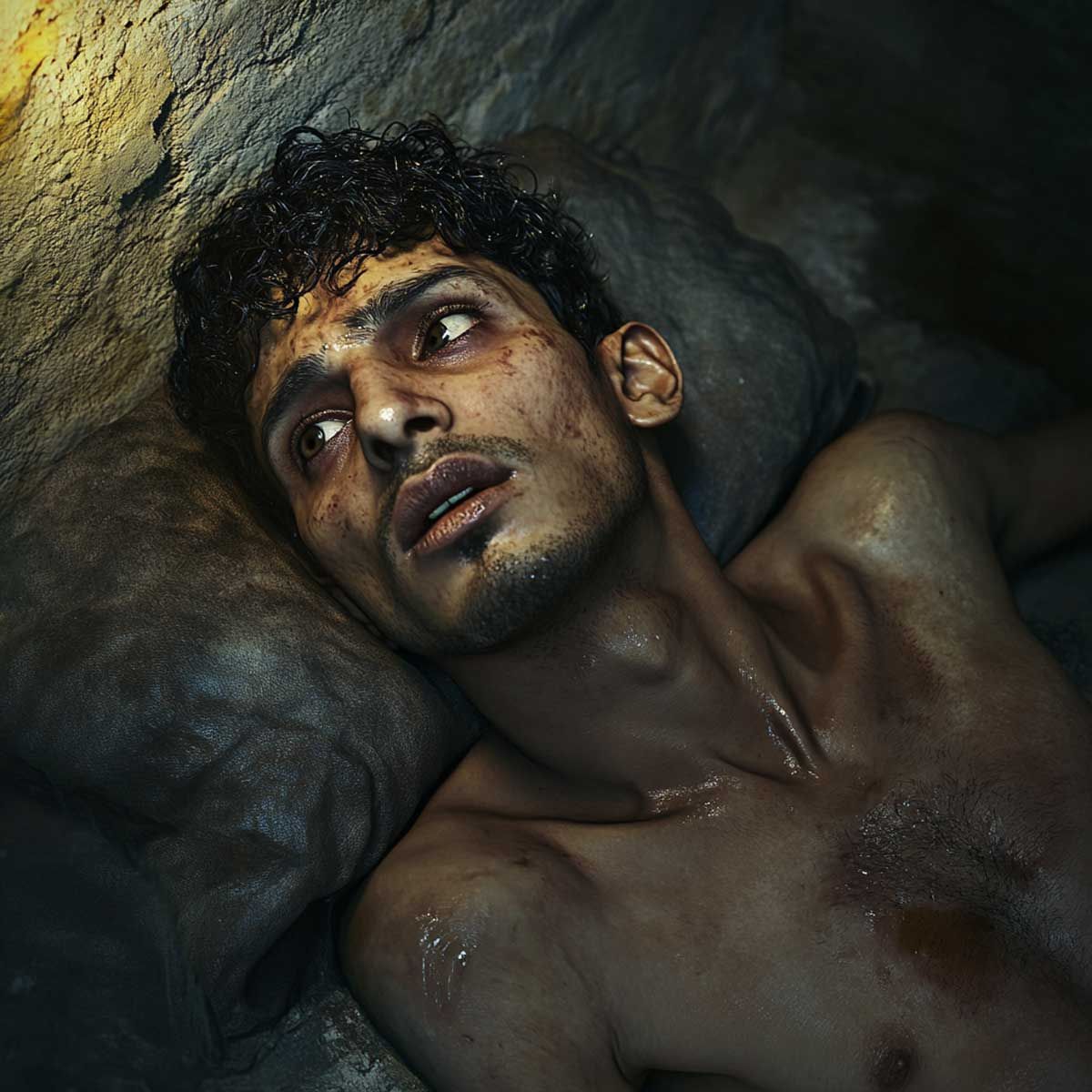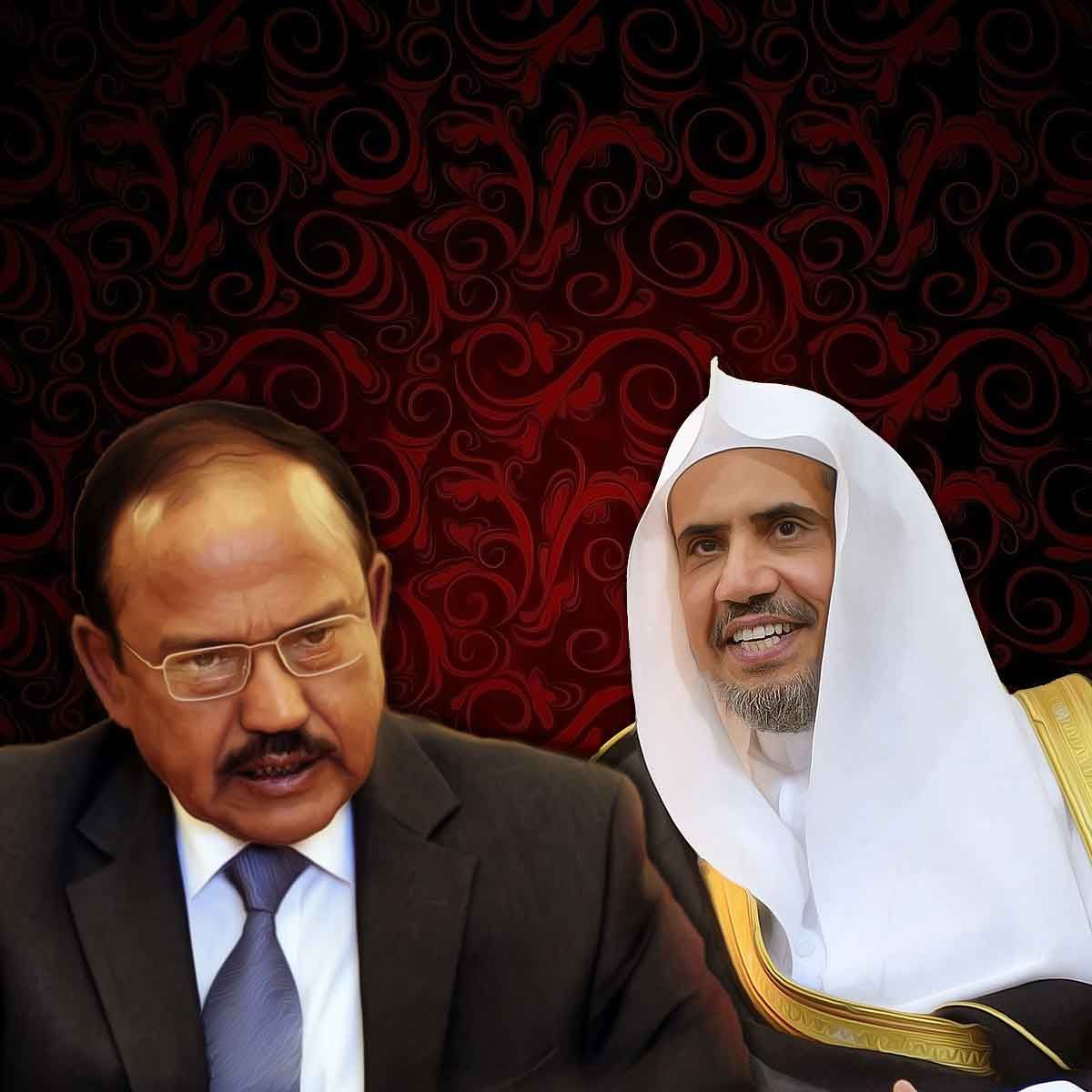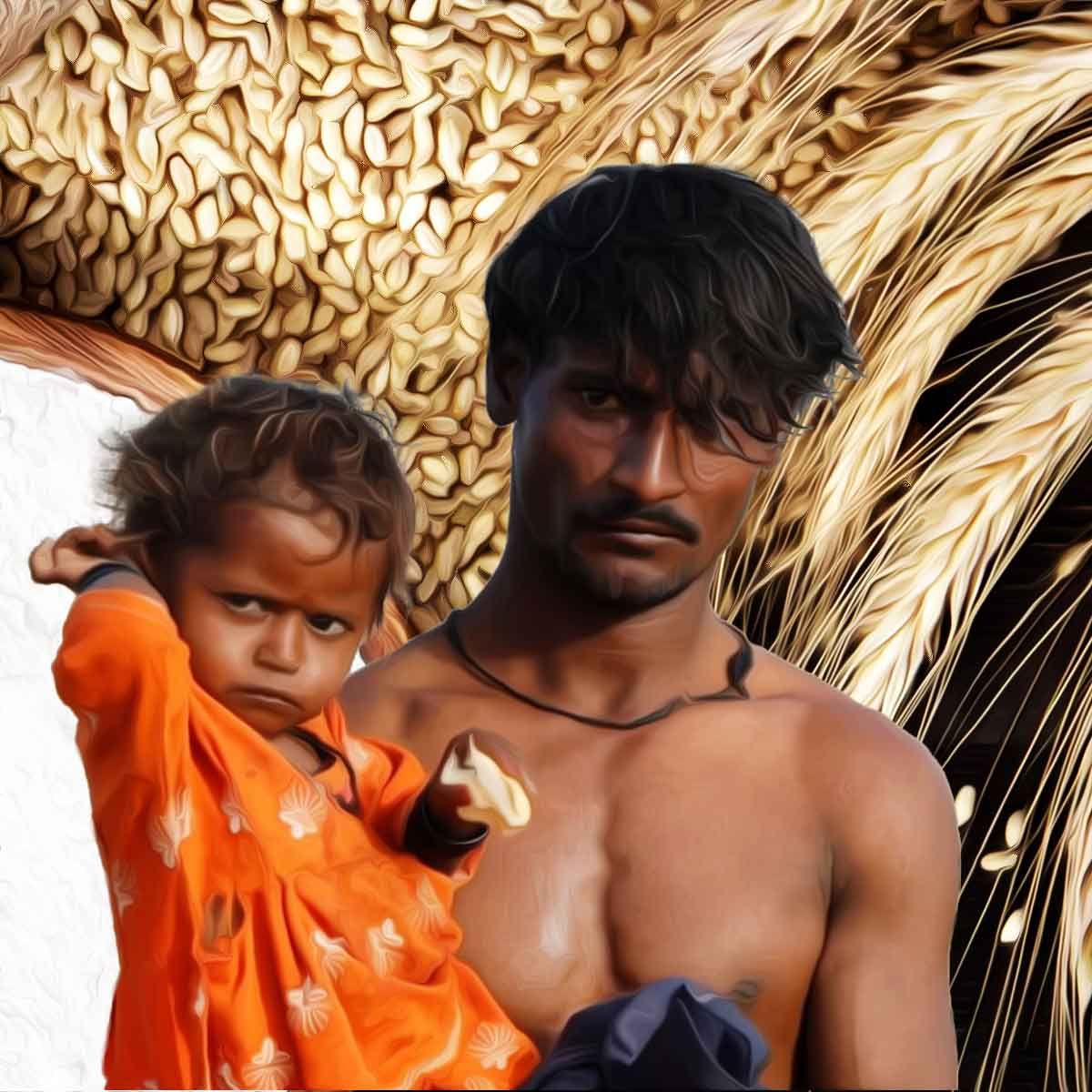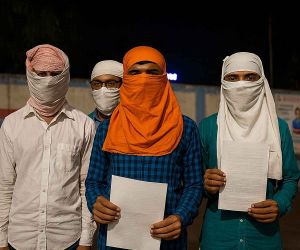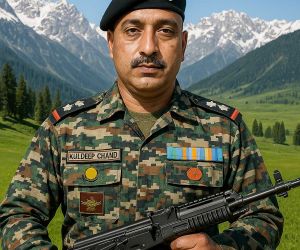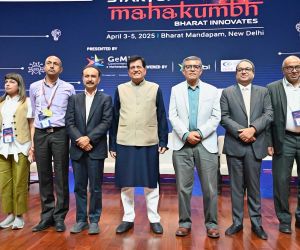MORE COVERAGE
Twitter Coverage
Satyaagrah
Written on
Satyaagrah
Written on
Satyaagrah
Written on
Satyaagrah
Written on
Satyaagrah
Written on
JOIN SATYAAGRAH SOCIAL MEDIA
Dr. Oumair Aejaz, originally from Bengaluru, charged with sex crimes in the US for recording thousands of nude videos of women & kids, spotlighting media bias in labeling Muslim perpetrators as 'Indian' or 'Asian' in crimes against young non-Muslim girls

A distressing case has emerged from Michigan, USA, where 40-year-old Dr. Oumair Aejaz, a native of Bengaluru, has been arrested and charged with a series of grave sex crimes. On August 8, law enforcement officials took him into custody at his home in Rochester Hills, just north of Detroit. He is currently held on a substantial $2-million bond, reflecting the severity of the accusations against him.
|
In the course of their investigation, police discovered a shocking collection of footage involving privacy breaches of the most invasive nature. Over 13,000 videos were found on a single hard drive, with an additional 15 external storage devices seized, potentially containing further evidence of criminal activities. The Oakland County Sheriff’s Office disclosed that Dr. Aejaz utilized hidden cameras to illicitly record children and women. These recordings were made in highly private settings such as hospital rooms, changing areas, closets, and bathrooms, with some of the victims being children as young as two years old.
The investigators also believe that Dr. Aejaz recorded numerous sexual encounters with women and hospital patients who were either asleep or incapacitated. This disturbing revelation points to a gross violation of both legal and moral boundaries.
Oakland County Sheriff Michael Bouchard commented on the case, stating, "This is one of the most disturbing sexual predator cases I have seen in my very long career.” He further elaborated on the extent of Dr. Aejaz's violations, saying, “He violates literally anyone and everyone he can. From a two-year-old boy to grown women, no one is immune from his disgusting predatory behaviour.” Sheriff Bouchard highlighted the especially egregious nature of the crimes, which included violating children in what should be safe environments and sexually exploiting women under sedation due to medical procedures, showcasing a horrific disregard for human dignity.
Sheriff Mike Bouchard added that the magnitude of Dr. Aejaz’s offenses is vast and the investigation into the full scope of his actions could take several months to complete.
Oakland County Sheriff Michael Bouchard, overseeing the investigation, expressed the overwhelming nature of the case due to its scope and severity. “The victimization is so broad and the perversion so great, we’re just beginning to wrap our arms around it,” Bouchard said, indicating the initial shock and complexity involved in comprehending the full extent of the crimes committed.
Sheriff Bouchard also shared his strong desire for justice in this case, emphasizing the importance of accountability. “At the end of this case, it is my fervent hope he is held fully accountable behind bars,” he added, highlighting the determination of the law enforcement to see through the legal process and ensure that Aejaz faces the consequences of his actions.
The case gained significant traction after a pivotal turn of events when Aejaz’s wife provided crucial material evidence to the authorities. This act prompted the Oakland County Sheriff’s Office to carry out several search warrants at Aejaz’s residence in Rochester Hills, Michigan. During these searches, investigators uncovered a disturbing array of electronic devices, which included six computers, four cell phones, and 15 external storage devices. Among these devices, one was found to contain over 13,000 videos, which, according to the police, Aejaz recorded over the last six years. The sheer volume of recorded content underscores the systemic and premeditated nature of his actions.
The complexity of the evidence gathered is substantial, and authorities estimate that it could take up to six months to complete a thorough forensic examination of all confiscated materials. This meticulous process is crucial in piecing together the full narrative of the crimes and ensuring that every piece of evidence is accounted for in the legal proceedings.
Dr. Aejaz, who holds Indian citizenship, has been a resident in the United States under a work visa. His journey in the U.S. began around 2011 when he completed his medical residency at Detroit Sinai Grace Hospital. Following his residency, he relocated to Dawson, Alabama, and later, in 2018, moved back to Oakland County, Michigan, to continue his medical practice. This timeline provides a backdrop to his professional life juxtaposed against the serious allegations he now faces, adding layers to the ongoing investigation into his activities and the impact on the communities he has been a part of.
|
The grooming gang conundrum: Why for the media, Muslim perpetrators preying on young non-Muslim girls abroad always become ‘Indian’ and ‘Asian’
The Western media's approach to reporting on crimes involving individuals from different religious backgrounds has stirred considerable debate, particularly in cases where the perpetrators are Muslim. This issue has come to the forefront once again following the arrest of Dr. Oumair Aejaz in Michigan, USA. Aejaz, a 40-year-old doctor, was charged with extensive sex crimes, including the recording of thousands of nude images of women and children spanning over six years. Despite the gravity of the allegations, a noticeable pattern in media coverage has emerged, where there appears to be a deliberate attempt to obscure the religious identity of the perpetrator while underscoring his ethnic origins.
This phenomenon is not isolated but part of a broader media practice that selectively emphasizes the religious identity of Muslims when their actions are positive, yet minimizes or completely omits this detail when their actions are criminal. In the case of Dr. Aejaz, significant sections of the media have opted to highlight his Indian nationality, fanning stereotypes associated with this demographic, rather than addressing his Muslim identity. This selective identification contributes to a skewed portrayal that impacts public perception.
The inconsistency becomes even more apparent in the comparative treatment of identities in different contexts. For instance, when Muslim individuals are involved in commendable activities, their religious identity is often celebrated or noted explicitly, such as in mentions of Muslim doctors’ associations. However, this recognition of religious identity conspicuously disappears in negative contexts. For example, while the media readily identifies Muslim individuals as such in positive scenarios, they frequently revert to broader, more neutral terms like 'Asian' or 'South Asian' when reporting crimes, as seen in this case where Dr. Aejaz was predominantly referred to as an "Indian doctor."
This bias is further evidenced by the reporting of major international news outlets, including the South China Morning Post, which headlined its report on Aejaz as: "Indian doctor in US took thousands of images of naked adults and children as young as 2". Such headlines effectively deflect attention from the religious background of the accused, instead casting a shadow over a broader ethnic or national group.
The dual standards in media reporting reveal a complex layer of biases that not only affect how individuals are perceived based on their ethnic and religious backgrounds but also shape the narrative in a way that can stigmatize entire communities.
The case of Dr. Oumair Aejaz, who was arrested in the United States for recording nude videos of children and women, has sparked a significant discussion regarding media representation based on ethnicity and religious identity. Notably, several prominent publications have referred to Aejaz primarily as an "Indian doctor," highlighting his national origin over other aspects of his identity. This trend raises questions about the selective emphasis on ethnic background in media reporting.
|
For instance, the International Business Times and WION referred to Aejaz with headlines focusing on his Indian origin, such as "Indian doctor jailed in US for recording nude videos of children, women" and "13,000 videos in single drive." Similarly, Mint and IndiaTV used headlines that not only identified Aejaz as Indian but also emphasized the disturbing nature of his crimes, with phrases like "Indian doctor films naked children and adults in US, arrested" and "‘Disturbing on many levels’: Indian doctor arrested in US for taking pictures of naked adults and children." IndiaToday also highlighted his actions and nationality with "Indian doctor in US records thousands of nude videos of kids, women, arrested."
These headlines might not seem problematic at first glance, considering that Aejaz is indeed of Indian origin. However, the issue lies in the consistent emphasis on his Indian connection, potentially overshadowing other relevant aspects of his identity, such as his professional role or the specifics of his criminal behavior. This focus contrasts sharply with how the same media outlets often report on positive actions by individuals of Muslim background, where the religious identity is prominently featured.
For example, in 2017, The Weekly Times reported a positive story with the headline "Muslim doctor saves man’s life," explicitly mentioning the religious identity of the individual involved. Similarly, in 2016, the Times of India highlighted the religious background of a Muslim girl who saved her Hindu classmate, focusing on the interfaith aspect of the story. Moreover, AajTV, a Pakistani news publication, reported on a "Heroic Muslim" saving people during a knife attack in London, yet referred to Aejaz merely as an "Indian doctor" when covering his crimes.
This discrepancy in reporting styles becomes even more evident when considering how regional accomplishments or crimes are attributed. AajTV, for instance, celebrated Neeraj Chopra’s Tokyo Olympics gold win as a "victory of South Asia," yet dismissed Aejaz's criminal actions by narrowing down his identity to his Indian nationality alone.
The selective portrayal in these cases illustrates a broader media practice that can influence public perception. By emphasizing certain aspects of an individual's background in one context and downplaying them in another, media outlets may inadvertently contribute to stereotyping or bias. This approach to reporting not only affects how individuals are seen but can also impact intercultural relations and societal cohesion, highlighting the need for more balanced and consistent media practices.
In January of the previous year, a notable incident in Madhya Pradesh captured the attention of Citizens for Justice and Peace (CJP), a group advocating for human rights. They reported on a courageous act where a man named Tipu Sultan risked his life to save a young girl, Monali Kaushal, from drowning. The headline used by CJP for this incident was "Muslim man risks life to save a Hindu girl from drowning in Madhya Pradesh," which specifically highlighted the religious identity of the hero involved.
This choice to emphasize the religious background of Tipu Sultan raises questions about the necessity and impact of mentioning religious identities in media reports, especially when the actions being reported are universally commendable regardless of the individual's faith. The specific mention of Tipu Sultan as a "Muslim man" and Monali Kaushal as a "Hindu girl" not only focuses on their religious differences but also subtly suggests that such an act of cross-religious heroism is extraordinary, thereby potentially reinforcing communal identities instead of universal human values.
The implications of this reporting style extend beyond just the description of the event. By focusing on the religious identity of the individuals involved in acts of bravery or heroism, media outlets can inadvertently contribute to the perpetuation of societal divisions based on religious lines. This approach contrasts with situations where individuals' religious identities are downplayed or omitted in negative contexts, as discussed in earlier examples involving criminal activities.
The decision to highlight religious identity in positive news stories while minimizing it in negative contexts can influence public perception, potentially leading to biased views on certain communities. It is crucial for media outlets to consider the broader impact of their choice of words and the messages they send through their reporting. In the case of Tipu Sultan, while his act was undeniably heroic, the emphasis on his and the victim's religious affiliations could be seen as an unnecessary addition that serves more to highlight religious boundaries than to simply honor a heroic deed.
|
CJP Reports and Media Portrayal of Religious Identity in Heroic and Criminal Acts
The reporting patterns of Citizens for Justice and Peace (CJP) and other media outlets have sparked discussions about the portrayal of religious identity in news media. A CJP report praised a "Muslim woman" for saving many lives through posthumous organ donation, omitting that some interpretations of Islam prohibit donating organs, although receiving organs may be allowed. This selective disclosure can lead to skewed perceptions of Islamic practices regarding organ donation.
Further, the Turkish news outlet Anadolu highlighted a French Muslim who "risked his life" to save people from a fire in Romans-sur-Isère, southeastern France, last July. The emphasis on the individual's religion frames the narrative of heroism within a religious context.
Additionally, Indian mainstream media during a rescue operation in Uttarakhand highlighted the Muslim identity of some rat miners who saved 41 workers, portraying them as national heroes, while similarly heroic Hindu miners did not receive the same emphasis. This selective portrayal by often termed leftist media, highlights religious identity selectively to fit specific narratives.
In terms of crimes, these outlets that often highlight Muslim identity in positive scenarios, downplay such identities in crime reports. This includes the coverage of anti-Hindu pogroms in Bangladesh where Hindus were attacked and killed, and religious motives were often downplayed by major outlets like Al Jazeera, The New York Times, and ABC, describing these events merely as "politically motivated revenge attacks."
Moreover, these media outlets glorified the Muslim identity of individuals forming "human chains" to protect Hindu temples but did not critically explore whether the attacks on Hindus were driven by Islamist extremism. This selective reporting reflects a troubling media bias where the portrayal of Muslims varies between glorification in acts of heroism and obfuscation or whitewashing in instances of crime.
|
Critically, the same section of foreign and Indian media that never misses a chance to glorify the Muslim identity when something positive occurs, even when religiosity has little to do with the actions, also engages in whitewashing crimes committed by Muslims. This indicates a bias in these media outlets, which perpetuate the delusion that there are only noble Muslims and others are just bad people—even if they commit violent acts like murder and rape in the name of their religion and Allah.
This narrative, maintained by Islamist-sympathizing media, not only distorts public perception but also fails to address the complex realities of religiously motivated violence, fostering a narrative that may contribute to interreligious misunderstanding and conflict.
When Muslims make notable contributions to society or achieve significant success, the emphasis on their Islamic identity in media narratives is often pronounced. This portrayal seeks to counteract negative stereotypes and promote the image of Muslims as valuable, constructive members of Western societies. This framing serves to enhance the public perception of Muslims positively, associating their achievements directly with their religious identity even if these accomplishments are secular and unrelated to their faith.
However, a stark contrast appears when the media addresses Islamic extremists. In such cases, the narrative often shifts to "terrorism has no religion," suggesting a general denial of any religious association with such acts. This discrepancy in reporting raises concerns about the consistency and integrity of media narratives. There seems to be an underlying implication that while positive achievements should be celebrated as triumphs of the Islamic community, negative actions should be stripped of any religious context, promoting a narrative that terrorism is universally devoid of religious motivations.
This selective portrayal becomes even more evident in the coverage of the notorious UK grooming gangs. Mainstream media outlets, such as The Telegraph, have referred to these perpetrators as "Asian," diluting the specific religious and ethnic identities involved. The headline "Telford scandal: Over 1,000 girls abused and raped by Asian gangs while police looked the other way" illustrates this trend. Notably, the criminals involved were predominantly Muslims of Pakistani descent who specifically targeted non-Muslim, predominantly white girls. This methodical selection based on religion and race was driven by a perverted form of religious extremism, yet the media coverage often glossed over or outright ignored these critical factors.
|
The pattern observed in Rotherham, Telford, and Rochdale involves systematic targeting of non-Muslim girls—including those from Hindu, Sikh, and White Christian backgrounds—by Pakistani Muslims. This targeting was not random but motivated by a deeply ingrained religious and racial hatred. The media’s reluctance to address the religious motivation behind these crimes stems partly from a pro-Islamist bias and partly from a fear of offending the Muslim community, which is often portrayed as being susceptible to offense over critical discussions of Islam.
By labeling these criminals merely as "Asian grooming gangs" or by their nationality without mentioning their Muslim identity, the media not only obscures the specific religious factors involved but also unfairly implicates other Asian communities who are themselves victims of these crimes. This generalization serves to protect the image of one group while simultaneously harming others, avoiding necessary discussions about the religious dimensions of these crimes.
The strategy of selectively emphasizing the religious identity of Muslims in media narratives is designed to shape public perception by associating positive actions strongly with Islam, while distancing negative actions from the religion. This method fosters a narrative that those who commit good deeds represent 'real Muslims,' whereas those involved in negative actions, such as terrorism or grooming gangs, are not considered true representatives of Islam. This narrative was vividly illustrated by the actions of ISIS, whose members, despite visibly carrying the Quran and weapons, are often not acknowledged in media as representative of Islam when committing acts of violence against non-Muslims.
In the UK, Muslim grooming gangs were frequently described by media and some pro-Islamist politicians not with specific religious identifiers but rather as "Asian" or "South Asian grooming gangs." Similarly, attacks by the Palestinian Islamic terrorist group Hamas on Jews and Israel are often characterized as acts of 'resistance' rather than religiously motivated terrorism. Islamist attackers are sometimes labeled in softer terms such as "Bhatke huye naujawan" (misled youths), and allegations of a grooming jihad targeting Hindu women in India are dismissed as hoaxes or conspiracy theories.
The recent case of Oumair Aejaz, referred to predominantly as an 'Indian doctor' in media reports, highlights this issue. Reports downplay his Muslim identity, focusing instead on his national origin. This contrasts with hypothetical scenarios where a Hindu perpetrator’s crime might be linked by media to their religious identity and even political inclinations. This approach underscores a significant bias: while a Muslim's negative actions are not seen as reflecting their religious identity, a Hindu's actions might be construed as indicative of wider cultural or religious traits.
This selective reporting extends to the portrayal of Muslims who assert their religiosity in public discussions and media appearances. For instance, an Islamist maulana recently emphasized on national television the prioritization of Islam over national identity, suggesting that religious affiliation should be the foremost identifier.
Given this context, there is a critical discussion to be had about whether the media should maintain this selective approach or start mentioning the religious identity consistently in both positive and negative contexts. If religion is deemed paramount by certain groups over national identity, as suggested by the maulana, it raises questions about the consistency of media reporting when it comes to religious identity. The decision by the media to place emphasis on Aejaz’s nationality rather than his religion in headlines further exemplifies the ongoing challenge in media portrayal, where an 'Indian doctor' is scrutinized while the dimension of being a 'Muslim doctor' is notably absent from the discourse.
 Support Us
Support Us
Satyagraha was born from the heart of our land, with an undying aim to unveil the true essence of Bharat. It seeks to illuminate the hidden tales of our valiant freedom fighters and the rich chronicles that haven't yet sung their complete melody in the mainstream.
While platforms like NDTV and 'The Wire' effortlessly garner funds under the banner of safeguarding democracy, we at Satyagraha walk a different path. Our strength and resonance come from you. In this journey to weave a stronger Bharat, every little contribution amplifies our voice. Let's come together, contribute as you can, and champion the true spirit of our nation.
 |  |  |
| ICICI Bank of Satyaagrah | Razorpay Bank of Satyaagrah | PayPal Bank of Satyaagrah - For International Payments |
If all above doesn't work, then try the LINK below:
Please share the article on other platforms
DISCLAIMER: The author is solely responsible for the views expressed in this article. The author carries the responsibility for citing and/or licensing of images utilized within the text. The website also frequently uses non-commercial images for representational purposes only in line with the article. We are not responsible for the authenticity of such images. If some images have a copyright issue, we request the person/entity to contact us at This email address is being protected from spambots. You need JavaScript enabled to view it. and we will take the necessary actions to resolve the issue.
Related Articles
- Hindus documented massacres for 1000s of years: Incomplete but indicative History of Attacks on India from 636 AD
- "Hinduon ke beech me khade hoke namaaz padi, that was very very special for me" - Waqar Younis takes Jihadist mindset of another level
- Wikipedia dismisses Love Jihad as a conspiracy theory by Hindus, but claims reverse Love Jihad against Muslims is real
- Tipu Sultan remembered as killer of Brahmins and demolisher of temples in many villages of Tamil Nadu: a freedom fighter or Islamic bigot?
- We present a list of trickery, hypocrisy, and biases of the Islamist propagandist Rana Ayyub as she manages to embarrass herself again by infuriating netizens of Saudi Arabia
- Aatish Taseer shows how his ‘jamaat’ has mastery over playing victim, brands Bollywood pro-Modi even as it remains anti-Hindu
- Anti-Hindu Delhi Riots case: Delhi HC grants bail to accused Asif Iqbal Tanha, Devangana Kalita, Natasha Narwal
- People in India celebrated and burnt firecrackers for Pakistan's victory in ICC Men's T20 World Cup match
- Tragedy or Drama: Mufti Mohammad Sayeed's daughter Rubaiya abduction led to free five most notorious terrorists
- Violent mob throwing stones, and radicals chopping off limbs is okay for ‘Liberals’ but a Hindu tweeting dislike for an ad is dangerous
- Twitter rewards an Islamist org, set to be banned by India, with a verified blue tick: Here is what PFI has done in the past
- Ex-radicalised Muslim author studies mosques in UK, reveals Taliban, ISIS-like lifestyle of the ultra-orthodox community
- Rahul Gandhi shares fake news related to Lord Ram, twice in two days. This is what it shows
- ‘Go to haram restaurants and poison their food’: Ex-Australian ISIS bride now lives a free life in Turkey. Details
- Sharjeel Imam, accused of Delhi riots explained why Indian Muslims have always celebrated Pakistan’s cricket match win against India




